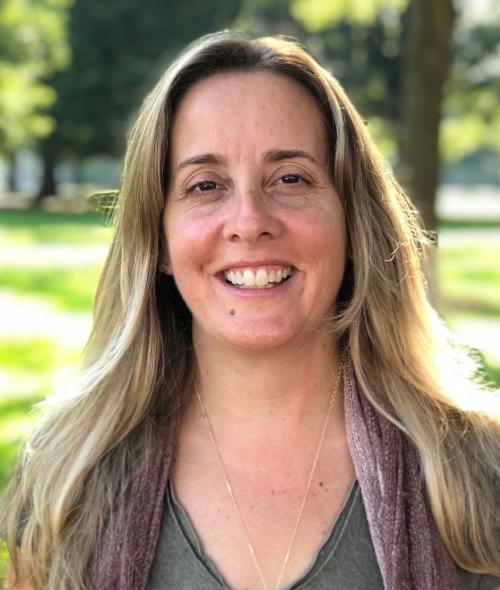3 Questions for Kristen Eshleman, Director of Innovation Initiatives at Davidson College | Inside Higher Ed

My friend Kristen Eshleman is the Director of Innovation Initiatives at Davidson College. Kristen graciously agreed to answer my 3 questions on her role, higher education after COVID-19, and the HAIL Storm.
Question #1: Your title at Davidson College is Director of Innovation Initiatives. Can you share with us some of the big things that you are working on?
Big things are relative! We are a small college, but like most liberal arts colleges, we do manage to punch above our weight class. There are two things I am excited about–both of which I see as important and focused on the longer-term goals of innovation but also informed by the immediate COVID crisis.
First is an exploration of new educational programs that help adult learners achieve social and economic mobility. The need is acute, and the demand for liberal arts skills is clear and growing. It will take many more new players and programs to meet that need. If we are serious about our role in social transformation, then we have to find ways to broaden our impact. Our president, Carol Quillen, articulated this in a Forbes piece at the start of the pandemic. Now is the time to push for a vision of scaling the liberal arts to more people. We are working on this call to action:
“Let’s dramatically expand capacity, using every tool we have to reach many more people at dramatically lower cost. We can do this by analyzing more precisely when and how traditional, residential education effectively develops individual skills and capabilities.”
We have plans to lean into social transformation in new ways. We’ll announce soon how we intend to partner with others and serve this space, specifically drawing from the “best of Davidson”, both curricular and co-curricular.
Second is an overhaul of our innovation process. During our COVID response efforts, we learned that we can move quickly and collaboratively when there is a shared sense of urgency. We are now redesigning our innovation process to incorporate the learnings and successes. I’m excited about this because more of us now see the value in a way of working that was unfamiliar to many but common in innovation. Notably, our new process will support intentionally cross-functional design teams, breaking down old silos and helping us work smarter under conditions of uncertainty.
Question #2: Can you share your thinking of where you think innovation in higher education might be heading post COVID-19?
Many recognize that the COVID crisis accelerated the need for innovation across higher education. Increased pressure from college alternatives and student desires for a more affordable education require we adapt and investigate new post-pandemic strategies. I think we’ll see a focus on agile administration as a desired skill for college administrators, in addition to dedicated innovation roles in more institutions. We are already seeing a focus on agile and innovation coming from traditional professional organizations like ACE and EDUCAUSE. That focus feels like a new sense of urgency in higher ed.
All of our weaknesses were exposed during the pandemic. At the same time, we shocked a lot of skeptics with the agility we all demonstrated in response. And everyone clearly saw how much students and families value and desire traditional residential education. I think there is an acknowledgment that there is something to build on here and that we’d be remiss if we retreated to pre-COVID ways of working. No one wants to go through that degree of painful change, unprepared, again.
Question #3: You were one of the main instigators and organizers of HAILStorm. (Harvesting Academic Innovation for Learners). Can you talk a little bit about the genesis of this network, what problem HAIL was trying to solve, and where this grassroots collective might go in the future?
HAIL is very grassroots. It started with a conversation between myself and Sean Hobson at ASU, during an EdSurge Loop call. We were both beta testers when EdSurge was launching the service. Neither of us thought our work would have much in common. Sean leads innovation at a huge public university. It was arguably the most mature innovation unit in higher ed at the time. I work in a very small private undergraduate liberal arts college. I was just getting innovation off the ground.
We realized we had similar process pain points, despite our differences, and we wondered who else might be in the same boat. Maybe we could collaborate to solve shared challenges? Mike Daniel and James DeVaney agreed this could be an effective community of practice and offered to host the first gathering, hence the name “HAIL”. We recruited more from across the sector for that first meetup and then continued to recruit others for meetings at Stanford, Cal State Channel Islands, Duke, and SNHU.
HAIL is composed mostly of institutional innovation leads who believe the best way to address external disruption is to “disrupt” ourselves, in alignment with long-held values of higher education.
HAIL fills a clear professional development gap for innovation leads. To date, there has been no higher ed professional organization with a dedicated focus on innovation. That is beginning to change, but HAIL has been our space for working on collective innovation challenges and best practices. We turn to each other to learn from our failures and successes, and to provide high level internal consulting on big problems. It’s an intimate and trusting community. We lean on each other as we navigate processes and programs that many of us are building for the first time.
Prior to COVID, the HAIL steering group was beginning to move toward a formalized model of professional development and mentoring for those seeking innovation lead roles, which are growing. The post-COVID case for innovation is even stronger.
We’ve been relatively quiet since COVID, dealing with urgent crises on our own campuses, and co-existing entirely on Slack. We hope to convene again in the Fall if conditions allow it. We have so much to share about the past year and where we should focus. But as I mentioned before, HAIL is grassroots. It will go where the community wants it to go.
